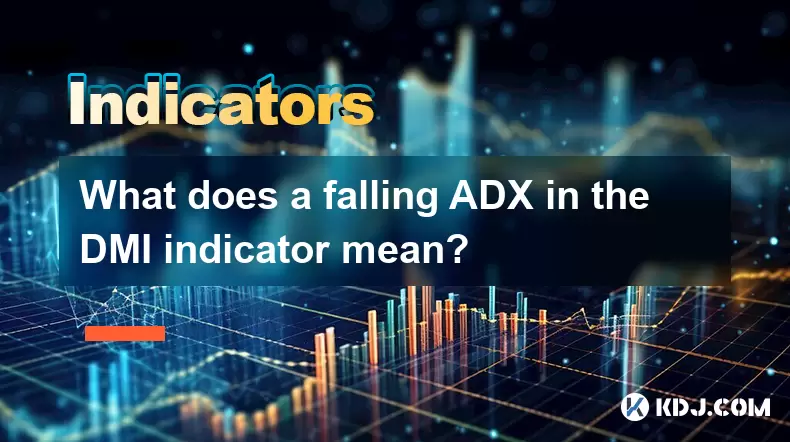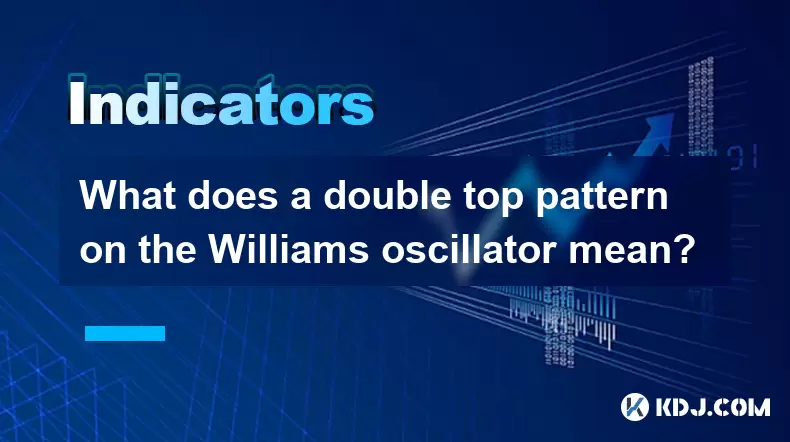-
 Bitcoin
Bitcoin $116700
0.24% -
 Ethereum
Ethereum $3973
4.34% -
 XRP
XRP $3.283
7.68% -
 Tether USDt
Tether USDt $1.000
0.01% -
 BNB
BNB $789.8
2.27% -
 Solana
Solana $176.2
3.31% -
 USDC
USDC $0.9999
0.00% -
 Dogecoin
Dogecoin $0.2238
5.14% -
 TRON
TRON $0.3389
-0.51% -
 Cardano
Cardano $0.7907
4.03% -
 Stellar
Stellar $0.4527
10.02% -
 Hyperliquid
Hyperliquid $41.07
4.27% -
 Sui
Sui $3.794
1.77% -
 Chainlink
Chainlink $19.49
10.40% -
 Bitcoin Cash
Bitcoin Cash $580.9
0.74% -
 Hedera
Hedera $0.2617
4.32% -
 Avalanche
Avalanche $23.41
3.67% -
 Ethena USDe
Ethena USDe $1.001
-0.03% -
 Litecoin
Litecoin $122.4
1.38% -
 Toncoin
Toncoin $3.364
1.49% -
 UNUS SED LEO
UNUS SED LEO $8.988
0.37% -
 Shiba Inu
Shiba Inu $0.00001295
2.82% -
 Uniswap
Uniswap $10.62
5.75% -
 Polkadot
Polkadot $3.922
4.46% -
 Dai
Dai $1.000
0.01% -
 Bitget Token
Bitget Token $4.494
2.15% -
 Monero
Monero $268.0
-1.30% -
 Cronos
Cronos $0.1523
3.68% -
 Pepe
Pepe $0.00001127
4.43% -
 Aave
Aave $285.4
4.85%
Must MA rising gaps be filled? How to operate when filling?
MA rising gaps in crypto may not always be filled, depending on market sentiment and trends; traders should use multiple strategies and manage risks effectively.
Jun 01, 2025 at 11:18 am

Understanding MA Rising Gaps
Moving Average (MA) rising gaps refer to the price gaps that occur in the cryptocurrency market when the price of a digital asset suddenly jumps above its moving average, leaving a noticeable gap. These gaps can be intriguing for traders as they often signal strong bullish momentum. However, a common question among traders is whether these gaps must be filled and, if so, how to operate effectively during such events.
Do MA Rising Gaps Always Need to Be Filled?
The concept of gap filling in the cryptocurrency market, particularly with respect to MA rising gaps, is not as rigid as in traditional stock markets. While it's true that many gaps do get filled eventually, it's not a guaranteed occurrence. The likelihood of an MA rising gap being filled depends on various factors, including market sentiment, volume, and the overall trend of the asset.
In the crypto market, MA rising gaps might not be filled if the bullish momentum continues to drive the price higher. Conversely, if the market sentiment shifts and bearish forces take over, the gap is more likely to be filled. Traders should always consider the broader market context and not solely rely on the assumption that all gaps will be filled.
Identifying MA Rising Gaps
To effectively operate when dealing with MA rising gaps, traders must first be able to identify them accurately. Here are the steps to identify an MA rising gap:
- Select a Time Frame: Choose a time frame that aligns with your trading strategy. Common time frames include daily, 4-hour, and 1-hour charts.
- Plot the Moving Average: Add a moving average indicator to your chart. The most commonly used MAs are the 50-day and 200-day moving averages.
- Observe the Price Action: Look for instances where the price suddenly jumps above the moving average, leaving a gap between the previous closing price and the new opening price.
- Confirm the Gap: Ensure that the gap is significant enough to be considered a rising gap. A small gap might not be as impactful as a larger one.
Strategies for Operating When Filling MA Rising Gaps
When an MA rising gap appears and there's a possibility of it being filled, traders can employ several strategies to capitalize on this situation. Here are some effective approaches:
- Short Selling: If you anticipate that the gap will be filled, you can enter a short position at the current price, aiming to profit from the expected downward movement. Ensure you set a stop-loss above the current price to manage risk.
- Buying at Support Levels: If the price starts to fill the gap, it may reach a support level. Buying at these levels can be a good strategy, especially if you believe the bearish momentum will soon fade, and the price will rebound.
- Using Technical Indicators: Employ other technical indicators like the Relative Strength Index (RSI) or the Moving Average Convergence Divergence (MACD) to confirm the potential filling of the gap. These indicators can provide additional signals to enter or exit trades.
Risk Management When Operating with MA Rising Gaps
Risk management is crucial when trading around MA rising gaps. Here are some key practices to follow:
- Set Stop-Loss Orders: Always set a stop-loss order to limit potential losses. For short positions, place the stop-loss above the current price. For long positions, place it below the support level.
- Position Sizing: Determine the size of your position based on your risk tolerance. Avoid over-leveraging, as this can lead to significant losses if the market moves against you.
- Monitor Market Sentiment: Keep an eye on market sentiment and news that could affect the price of the cryptocurrency. Sudden shifts in sentiment can lead to rapid price changes, impacting your trades.
Practical Example of Operating When Filling MA Rising Gaps
To illustrate how to operate when filling MA rising gaps, consider the following example:
- Scenario: Bitcoin (BTC) experiences a significant price jump, creating an MA rising gap on the daily chart.
- Analysis: You observe that the RSI is overbought, suggesting that a pullback might be imminent. The gap between the previous close and the new open is significant.
- Strategy: You decide to short BTC at the current price, anticipating that the gap will be filled. You set a stop-loss order at 1% above the current price to manage risk.
- Execution: As the price starts to decline and fills the gap, you monitor the support levels. Once the price reaches a key support level, you close your short position and take profits.
- Next Move: If you believe the price will rebound, you can enter a long position at the support level, setting a stop-loss below it to protect against further declines.
Frequently Asked Questions
Q: Can MA rising gaps be used as a standalone trading signal?
A: While MA rising gaps can be a useful indicator, they should not be used as a standalone trading signal. It's important to combine them with other technical indicators and market analysis to increase the reliability of your trading decisions.
Q: How does the time frame affect the significance of an MA rising gap?
A: The time frame can significantly impact the importance of an MA rising gap. Gaps on longer time frames, such as daily or weekly charts, are generally more significant and indicative of strong market moves compared to those on shorter time frames like 1-hour charts.
Q: Are there specific cryptocurrencies where MA rising gaps are more common?
A: MA rising gaps can occur in any cryptocurrency, but they are more frequently observed in highly liquid assets like Bitcoin and Ethereum. These cryptocurrencies tend to have more significant price movements, increasing the likelihood of gaps.
Q: How can I improve my ability to predict whether an MA rising gap will be filled?
A: Improving your ability to predict gap filling involves continuous learning and practice. Stay updated with market news, analyze historical data, and backtest your strategies. Additionally, understanding the psychology of market participants can provide valuable insights into potential price movements.
Disclaimer:info@kdj.com
The information provided is not trading advice. kdj.com does not assume any responsibility for any investments made based on the information provided in this article. Cryptocurrencies are highly volatile and it is highly recommended that you invest with caution after thorough research!
If you believe that the content used on this website infringes your copyright, please contact us immediately (info@kdj.com) and we will delete it promptly.
- Roman Storm, Funding Effort, and the Looming Defense Retrial: A New York Minute on the Tornado Cash Case
- 2025-08-09 02:50:14
- Crypto's Wild Ride: XRP, Dogecoin, and the Altcoin Surge You Can't Ignore
- 2025-08-09 02:50:14
- Elon Musk, Bitcoin, and the Enduring Power of Approval: A Crypto Love Story?
- 2025-08-09 03:50:15
- Ruvi AI: The Next Big Thing After Ripple on CoinMarketCap?
- 2025-08-09 03:50:15
- Floki Price Surges: Elliott Wave and Fibonacci Setups Point to Potential Gains!
- 2025-08-09 02:30:16
- Pepe Price, RTX (Remittix?) & the $10K ETH Dream: NYC Crypto Chatter
- 2025-08-09 02:30:16
Related knowledge

What does it mean when the TRIX indicator suddenly diverges downward after a long period of convergence?
Aug 09,2025 at 12:56am
Understanding the TRIX Indicator in Cryptocurrency TradingThe TRIX indicator, or Triple Exponential Average, is a momentum oscillator used in technica...

Why is the rise limited after a MACD bottoming divergence?
Aug 09,2025 at 12:07am
Understanding MACD Bottoming Divergence in Cryptocurrency TradingThe MACD (Moving Average Convergence Divergence) is a widely used technical indicator...

What does it mean when the OBV continues to rise but the price is trading sideways?
Aug 08,2025 at 10:35pm
Understanding On-Balance Volume (OBV)On-Balance Volume (OBV) is a technical indicator that uses volume flow to predict changes in stock or cryptocurre...

What does a falling ADX in the DMI indicator mean?
Aug 09,2025 at 03:16am
Understanding the ADX and DMI Indicator FrameworkThe DMI (Directional Movement Index) is a technical analysis tool developed by J. Welles Wilder to id...

What does a double top pattern on the Williams oscillator mean?
Aug 09,2025 at 02:36am
Understanding the Williams %R OscillatorThe Williams %R oscillator is a momentum indicator developed by Larry Williams to identify overbought and over...

What is a nonce and how is it used in Proof of Work?
Aug 04,2025 at 11:50pm
Understanding the Concept of a Nonce in CryptographyA nonce is a number used only once in cryptographic communication. The term 'nonce' is derived fro...

What does it mean when the TRIX indicator suddenly diverges downward after a long period of convergence?
Aug 09,2025 at 12:56am
Understanding the TRIX Indicator in Cryptocurrency TradingThe TRIX indicator, or Triple Exponential Average, is a momentum oscillator used in technica...

Why is the rise limited after a MACD bottoming divergence?
Aug 09,2025 at 12:07am
Understanding MACD Bottoming Divergence in Cryptocurrency TradingThe MACD (Moving Average Convergence Divergence) is a widely used technical indicator...

What does it mean when the OBV continues to rise but the price is trading sideways?
Aug 08,2025 at 10:35pm
Understanding On-Balance Volume (OBV)On-Balance Volume (OBV) is a technical indicator that uses volume flow to predict changes in stock or cryptocurre...

What does a falling ADX in the DMI indicator mean?
Aug 09,2025 at 03:16am
Understanding the ADX and DMI Indicator FrameworkThe DMI (Directional Movement Index) is a technical analysis tool developed by J. Welles Wilder to id...

What does a double top pattern on the Williams oscillator mean?
Aug 09,2025 at 02:36am
Understanding the Williams %R OscillatorThe Williams %R oscillator is a momentum indicator developed by Larry Williams to identify overbought and over...

What is a nonce and how is it used in Proof of Work?
Aug 04,2025 at 11:50pm
Understanding the Concept of a Nonce in CryptographyA nonce is a number used only once in cryptographic communication. The term 'nonce' is derived fro...
See all articles

























































































